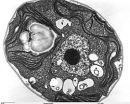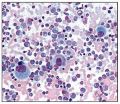(Press-News.org) Scientists at Karolinska Institutet in Sweden have made a large step towards the understanding of how human genes are regulated. In a new study, published in the journal Cell, they identified the DNA sequences that bind to over four hundred proteins that control expression of genes. This knowledge is required for understanding of how differences in genomes of individuals affect their risk to develop disease.
After the human genome was sequenced in 2000, it was hoped that the knowledge of the entire sequence of human DNA could rapidly be translated to medical benefits such as novel drugs, and predictive tools that would identify individuals at risk of disease. This however turned out to be harder than anticipated, one of the reasons being that only 1 percent of the genome that code for proteins was in fact possible to read. The remaining part, much of which describes how these proteins should be expressed in different cells and tissues, could not be understood. This, in turn, because the scientists did not know which DNA sequences are functional, and bind to the specific proteins called transcription factors that regulate gene expression.
"The genome is like a book written in a foreign language, we know the letters but cannot understand why a human genome makes a human or the mouse genome a mouse", says Professor Jussi Taipale, who led the study at the Department of Biosciences and Nutrition. "Why some individuals have higher risk to develop common diseases such as heart disease or cancer has been even less understood."
The human genome encodes approximately 1000 transcription factors, and they bind specifically to short sequences of DNA, and control the production of other proteins. In the work published in Cell, the scientists at Karolinska Institutet describe DNA sequences that bind to over 400 such proteins, representing approximately half of all human transcription factors. Data was generated with a new method that uses a modern DNA sequencer that produces hundreds of millions of sequences, giving the results unprecedented accuracy and reliability.
In addition, binding specificities of human transcription factors were compared to those of the mouse. Surprisingly, no differences were found. According to the scientists, these results suggest that the basic machinery of gene expression is similar in humans and mice, and that the differences in size and shape are caused not by differences in transcription factor proteins, but by presence or absence of the specific sequences that bind to them.
"Taken together, the work represents a large step towards deciphering the code that controls gene expression, and provides an invaluable resource to scientists all over the world to further understand the function of the whole human genome", says Professor Taipale. "The resulting increase in our ability to read the genome will also improve our ability to translate the rapidly accumulating genomic information to medical benefits.
###
This project was supported by the Center for Biosciences at Karolinska Institutet, Knut and Alice Wallenberg Foundation, the Swedish Research Council, Science for Life Laboratory, the Swedish Cancer Foundation, ERC Advanced Grant GROWTHCONTROL, and the EU FP7 project SYSCOL.
Publication: 'DNA-Binding Specificities of Human Transcription Factors', Jolma, A., Yan, J., Whitington, T., Toivonen, J., Nitta, K.R., Rastas, P., Morgunova, E., Enge, M., Taipale, M., Wei, G., Palin, K., Vaquerizas, J.M., Vincentelli, R., Luscombe, N.M., Hughes, T.R., Lemaire, P., Ukkonen, E., Kivioja, T. and Taipale, J., Cell, online 17 January 2013. Embargoed until 12:00 (noon) US Eastern Time, on Thursday 17 January 2013.
For further information, please contact:
Jussi Taipale, Professor
Tel: 46-722-824-847
Email: Jussi.taipale@ki.se
Arttu Jolma, Msc., Doctoral Student
Tel: 46-858-586-895
Email: arttu.jolma@ki.se
Jian Yan, Msc., Doctoral Student
Tel: 46-858-586-895
Email: jian.yan@ki.se
Contact the Press Office and download photos: http://ki.se/pressroom
Karolinska Institutet – a medical university: http://ki.se/english
Learning the alphabet of gene control
2013-01-17
ELSE PRESS RELEASES FROM THIS DATE:
Cancer mortality down 20 percent from 1991 peak
2013-01-17
Atlanta– Jan. 17, 2013–As of 2009, the overall death rate for cancer in the United States had declined 20 percent from its peak in 1991, translating to the avoidance of approximately 1.2 million deaths from cancer, 152,900 of these in 2009 alone. These figures come from the American Cancer Society's annual Cancer Statistics report, one of the most widely-cited medical publications in the world.
Each year, the American Cancer Society estimates the numbers of new cancer cases and deaths expected in the United States in the current year and compiles the most recent data ...
How cells know when it's time to eat themselves
2013-01-17
Researchers at the University of California, San Diego School of Medicine have identified a molecular mechanism regulating autophagy, a fundamental stress response used by cells to help ensure their survival in adverse conditions.
The findings are published online in the January 17 issue of Cell.
Senior author Kun-Liang Guan, PhD, a professor of pharmacology at UC San Diego Moores Cancer Center, and colleagues report that an enzyme called AMPK, typically involved in sensing and modulating energy use in cells, also regulates autophagic enzymes.
Autophagy, which derives ...
Drug targets hard-to-reach leukemia stem cells responsible for relapses
2013-01-17
Researchers at the University of California, San Diego School of Medicine have discovered that hard-to-reach, drug-resistant leukemia stem cells (LSCs) that overexpress multiple pro-survival protein forms are sensitive – and thus vulnerable – to a novel cancer stem cell-targeting drug currently under development.
The findings, published in the January 17 online issue of Cell Stem Cell, open the possibility that diseases like chronic myeloid leukemia (CML) and some solid tumor cancers might – in combination with other therapies – be more effectively treated with this ...
Mount Sinai researchers discover how the flu virus tells time
2013-01-17
Scientists have discovered that that the flu virus can essentially tell time, thereby giving scientists the ability to reset the virus' clock and combat it in more effective ways. According to researchers at the Icahn School of Medicine at Mount Sinai, the flu knows how much time it has to multiply, infect other cells, and spread to another human being. If it leaves a cell too soon, the virus is too weak. If it leaves too late, the immune system has time to kill the virus.
The finding provides a novel design platform for the flu vaccine and could lead to new antiviral ...
Deodorants: Do we really need them?
2013-01-17
New research shows that more than 75 per cent of people with a particular version of a gene don't produce under-arm odour but use deodorant anyway.
The study was based on a sample of 6,495 women who are part of the wider Children of the 90s study at the University of Bristol. The researchers found that about two per cent (117 out of 6,495) of mothers carry a rare version of a particular gene (ABCC11), which means they don't produce any under-arm odour.
While about 5 per cent of people who produce an odour do not use deodorant, more than a fifth (26 out of 117) of ...
Gastric banding an effective long-term solution to obesity
2013-01-17
Laparoscopic adjustable gastric banding – lap banding – is a safe and effective long-term strategy for managing obesity, according to the findings of a landmark 15-year follow-up study of patients treated in Australia.
The follow-up study, the longest and most comprehensive yet reported, was published in the Annals of Surgery, and found a significant number of lap band patients maintained an average weight loss of 26 kilograms for more than a decade after their procedure.
Professor Paul O'Brien and colleagues from the Centre for Obesity Research and Education (CORE) ...
'Jet-lagged' fruit flies provide clues for body clock synchronisation
2013-01-17
New research led by a team at Queen Mary, University of London, has found evidence of how daily changes in temperature affect the fruit fly's internal clock.
"A wide range of organisms, including insects and humans, have evolved an internal clock to regulate daily patterns of behaviour, such as sleep, appetite, and attention," explains Professor Ralf Stanewsky, senior study author from Queen Mary's School of Biological and Chemical Sciences.
"Research on animal and human clocks shows that they are fine tuned by natural and man-made time cues, for example the daily ...
Genetic admixture in southern Africa
2013-01-17
This press release is available in German.
An international team of researchers from the MPI for Evolutionary Anthropology in Leipzig and the CNRS in Lyon have investigated the maternally inherited mitochondrial DNA of 500 individuals from southern Africa speaking different Khoisan and Bantu languages. Their results demonstrate that Khoisan foragers were genetically more diverse than previously known. Divergent mtDNA lineages from indigenous Khoisan groups were incorporated into the genepool of the immigrating Bantu-speaking agriculturalists through admixture, and have ...
Study of cancer cell metabolism yields new insights on leukemia
2013-01-17
University of Rochester Medical Center scientists have proposed a new reason why acute myeloid leukemia, one of the most aggressive cancers, is so difficult to cure: a subset of cells that drive the disease appear to have a much slower metabolism than most other tumors cells.
The slower metabolism protects leukemia cells in many important ways and allows them to survive better – but the team also found an experimental drug tailored to this unique metabolic status and has begun testing its ability to attack the disease, URMC researchers report in the Jan. 17, 2013, online ...
Bacteria's hidden skill could pave way for stem cell treatments
2013-01-17
A discovery about the way in which bugs spread throughout the body could help to develop stem cell treatments.
Researchers at the University of Edinburgh have found that bacteria are able to change the make-up of supporting cells within the nerve system, called Schwann cells, so that they take on the properties of stem cells.
Because stem cells can develop into any of the different cell types in the body – including liver and brain cells – mimicking this process could aid research into a range of degenerative conditions.
Scientists made the discovery studying ...


